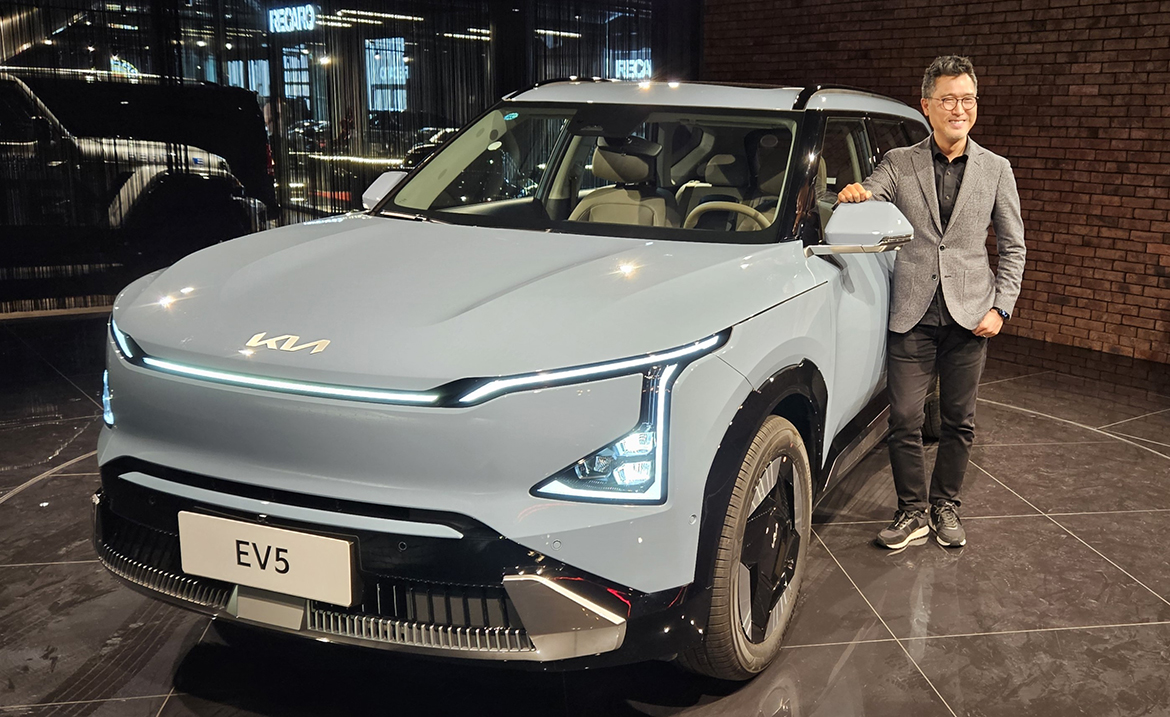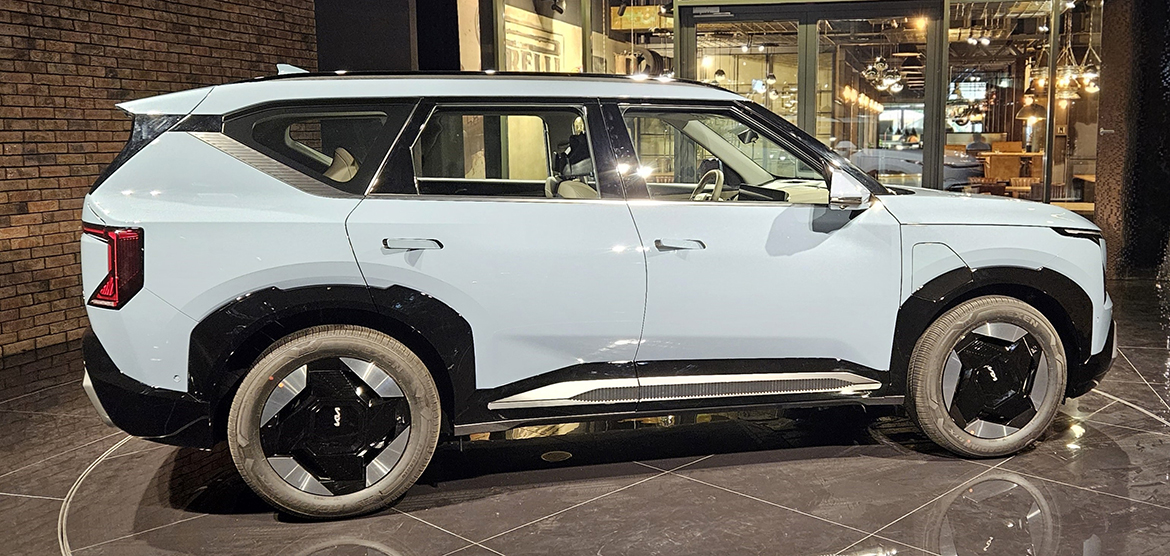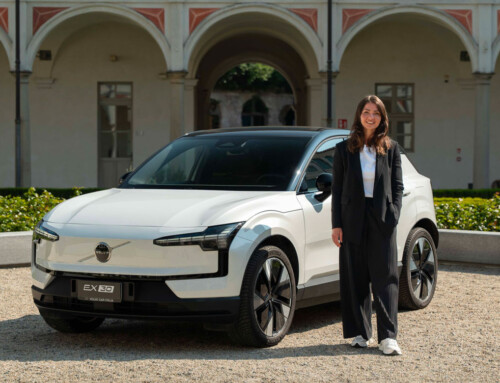While waiting for the auto shows in Europe to regain their importance, new opportunities for the design community to meet are emerging. At the beginning of April, we took part in the Car Design Event, now in its second edition, organized at the Drivers & Business Club in Munich by Jens Meiners and Des Sellmeijer, journalists from the automotive sector. An event that brought together about fifty car designers, as many journalists from the specialized press and a group of transportation design students, who came to discuss current and future trends in the automotive world as well as to see live about twenty concepts and listen to the history of the project from their authors. These include some European debuts, such as the Kia PV 1 and PV 7 (unveiled in January at CES in Las Vegas) and the Kia EV5, the latter in production version already on sale on the Chinese market.
Together with Won Kyu Kang, Head of Kia Future Design Group, we had the opportunity to discover the EV5 in its overall shape and in its surprising details in terms of practicality and high level of finish. In some cases, these are features that were not initially included in the design brief, such as the shelf that rises from the bottom of the luggage compartment to become a practical coffee table: “It is an element proposed by the designers that the company liked, so it was decided to develop it,” explains Kang, while also showing us the flexible system of fasteners to anchor bags and nets to contain the objects transported. “That’s why I’m showing you the details first: with this car, we didn’t just want to make a fascinating design, but a really useful product, for the benefit of users. What we always do in the background of our projects is to thoroughly understand the clients and what can benefit them. That’s fundamental for us.”
Initially created as a vehicle dedicated to the Chinese market, the EV5 therefore interprets some of the demands of that market in terms of versatility. When used for trips out of town, the car is also “lived” when stationary, often by the whole family, from grandparents to grandchildren: hence the front passenger seat that extends in the central part almost to form a sofa with the driver’s seat, the tables that fold down from the backrests of the first row where smartphones and tablets can be inserted, the back of the headrests shaped to offer practical handles with the function of coat hangers. All made in a simple way but with a careful choice of materials, of which the steering wheel is an excellent example which, in the case of the car exhibited in Monaco, interprets the usual glossy “piano black” surface in dark brown, well combined with beige upholstery.
It would have been a shame to relegate such a project – attractive even in its overall design, which well interprets the original and very modern themes of Kia’s Opposites United philosophy on the outside and inside – to the Chinese market alone. At 4.61 metres long (about 10 cm longer than a Sportage), the EV5 is a five-seater electric-powered SUV that also looks ideal for Europe. Its potential as a global product was evident in the company, confirms Won Kyu Kang: “They decided not to make it a car for China alone because of the strength of its design. There are customer trends and desires that are universal. In addition, the EV5 was designed during the Covid era, when the desire to live more outdoors became much stronger everywhere.”















